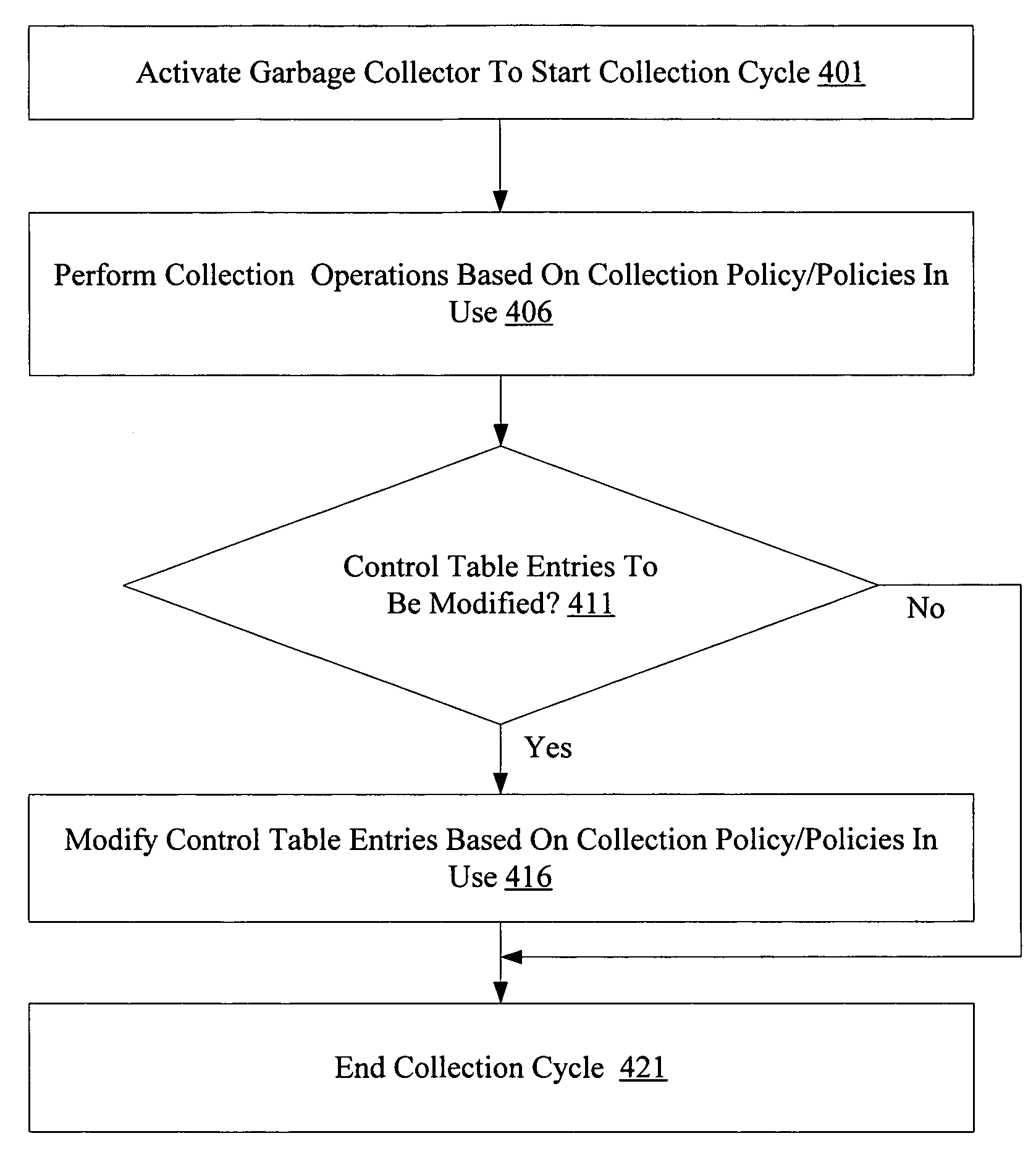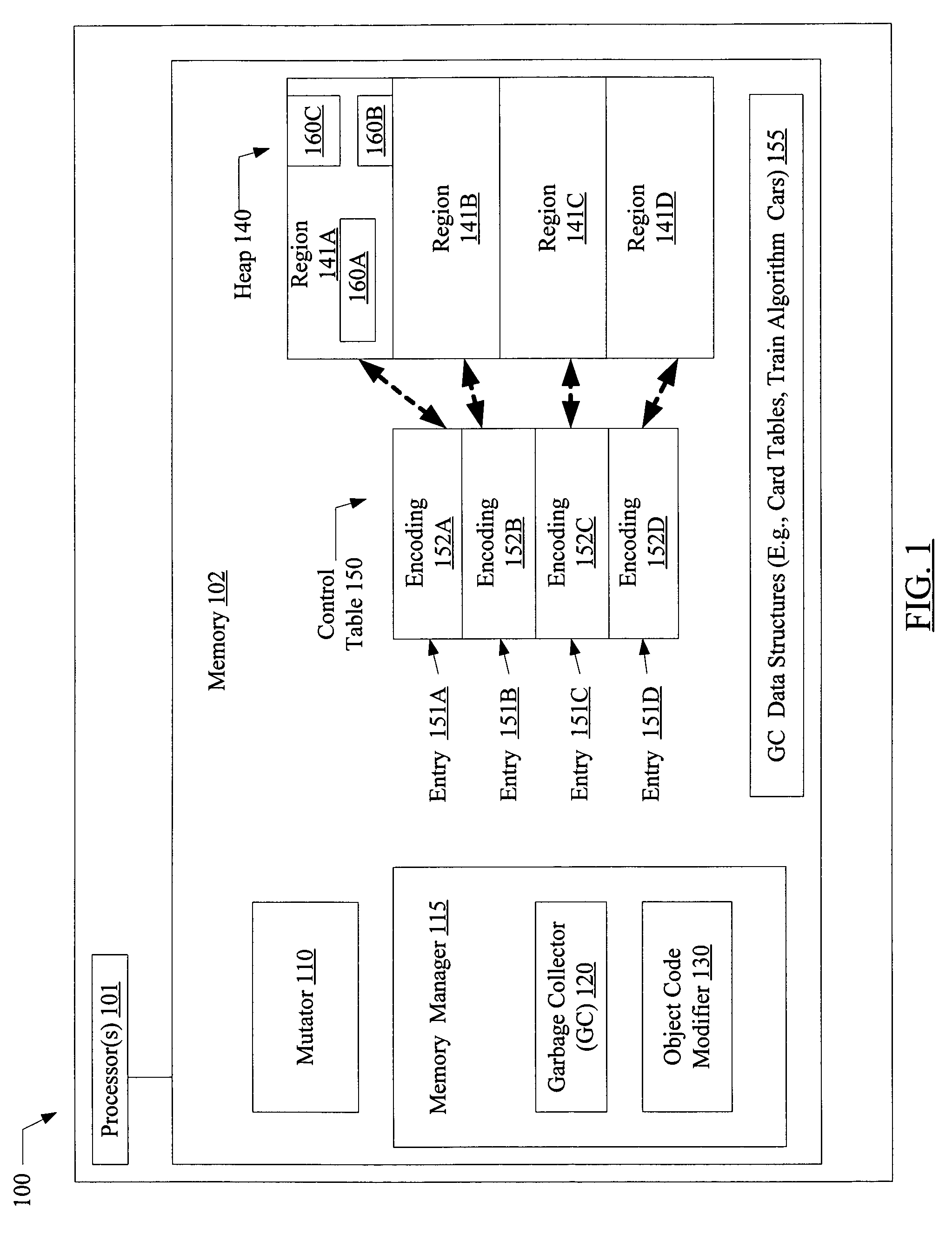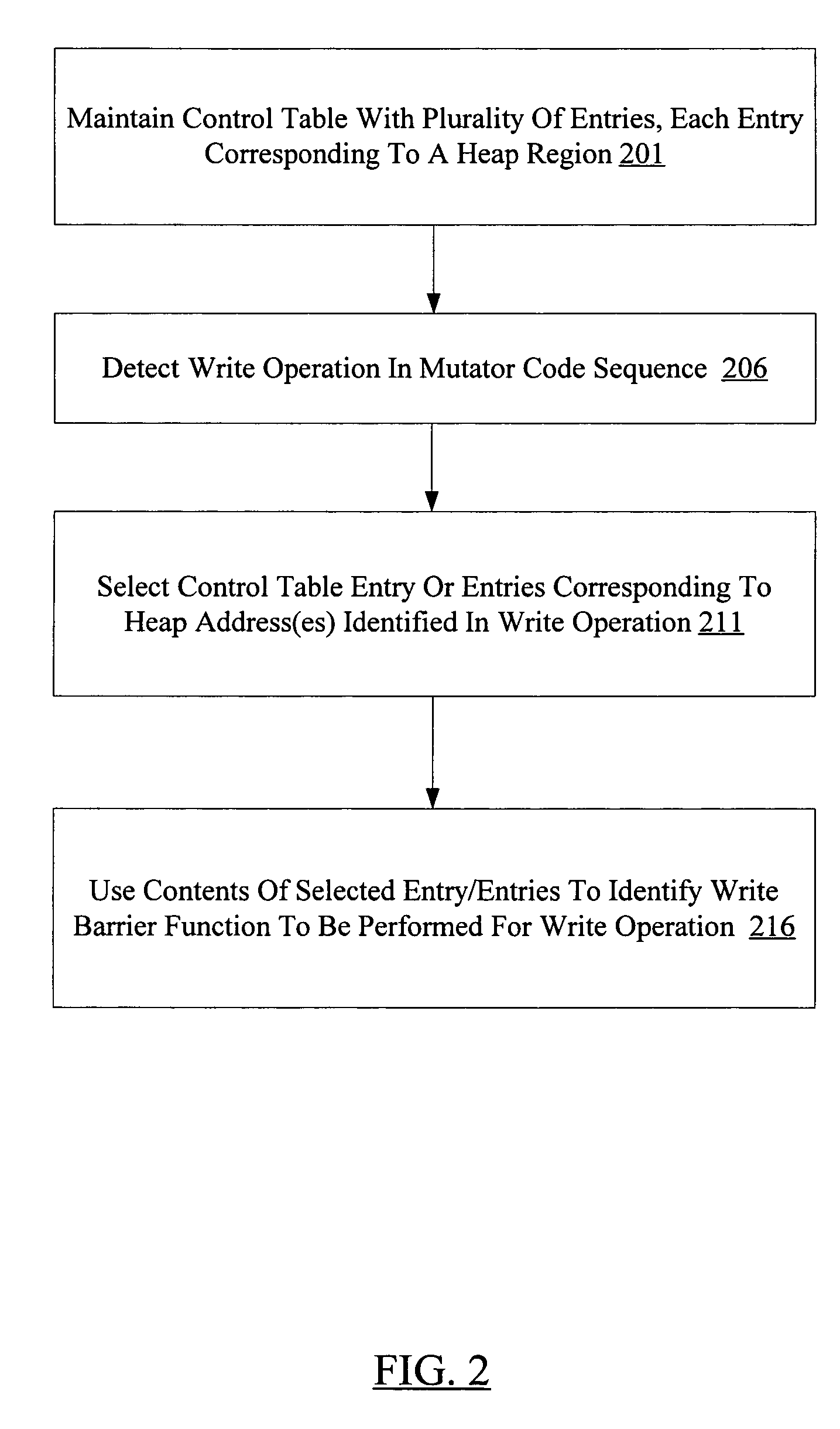Coarse write barrier control mechanism
a write barrier and control mechanism technology, applied in the field of computer systems, can solve the problems of increasing the memory requirements of the system to exceed the system's available memory, consuming a lot of effort, and difficult to share the available memory space among multiple applications
- Summary
- Abstract
- Description
- Claims
- Application Information
AI Technical Summary
Benefits of technology
Problems solved by technology
Method used
Image
Examples
Embodiment Construction
[0027]FIG. 1 is a block diagram illustrating one embodiment of a system 100. The system includes one or more processors 101 and a memory 102. Memory 102 may include a memory manager 115, a mutator 110, and a heap 140 representing memory that is dynamically allocated to the mutator. Mutator 110 may represent any application process or thread that modifies dynamically allocated memory. An execution service (such as one or more compilers and / or interpreters, some of which may be incorporated within a virtual machine process in some embodiments) may be responsible for allowing the execution on processors 101 of the application code corresponding to the mutator. While only a single mutator 110 and its corresponding heap 140 is illustrated in FIG. 1, in general memory 102 may comprise numerous mutators 110, each of which may be associated with a corresponding heap 140. In addition, each mutator 110 may also access and modify statically allocated regions of memory (such as global variables...
PUM
 Login to View More
Login to View More Abstract
Description
Claims
Application Information
 Login to View More
Login to View More - R&D
- Intellectual Property
- Life Sciences
- Materials
- Tech Scout
- Unparalleled Data Quality
- Higher Quality Content
- 60% Fewer Hallucinations
Browse by: Latest US Patents, China's latest patents, Technical Efficacy Thesaurus, Application Domain, Technology Topic, Popular Technical Reports.
© 2025 PatSnap. All rights reserved.Legal|Privacy policy|Modern Slavery Act Transparency Statement|Sitemap|About US| Contact US: help@patsnap.com



